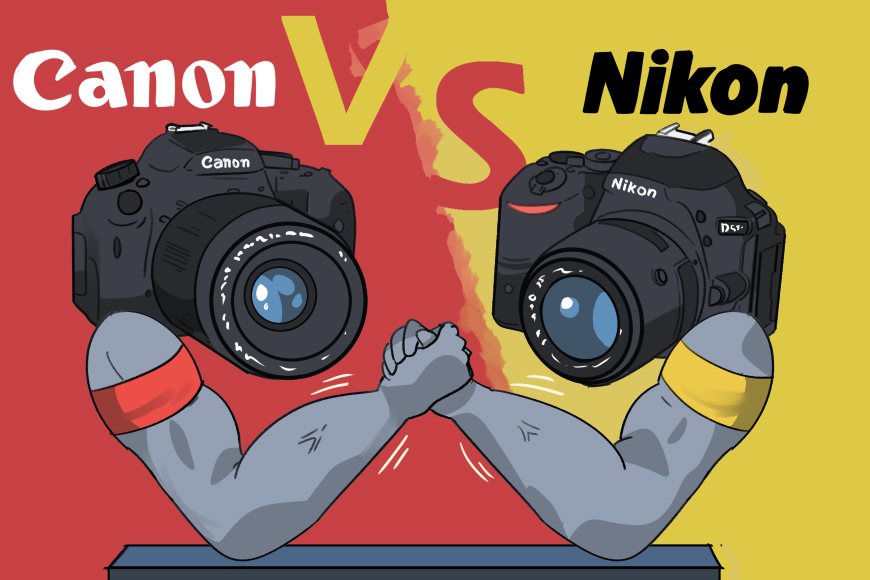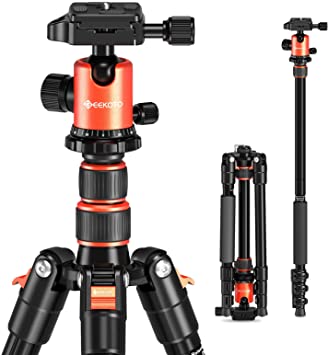is Canon better than Nikon?
I would probably say it does, don’t you think so?
This is the question that’s been asked by many people. And I thought of writing an article to help those who are having a hard time deciding which camera should they buy. So here it goes! 🙂 Well, first let me start with some basic information about these brands before I go straight to the comparison.

Nikon was established in 1917 by JAPANESE brothers Tashiro Nippusuku and its headquarter is located in Tokyo, Japan. Canon on the other hand was established in 1937 by Goro Yoshida, Saburo Uchida, and Takeo Maeda as ‘Canon Shokai’, and its headquarter is also located in Tokyo, Japan.
Also read: Top Picks for the Best Camera for Filmmaking on a Budget 2021
These two brands are positioned in the same camera category and they both have their own uniqueness that makes them different from each other. One of these differences is lens compatibility. Canon cameras use EF-type lenses and Nikon uses AF-S type lenses. Generally speaking, EF lenses are more expensive than AF-S types and I read somewhere that there’s less chance to find used or second-hand EF type because it’s not very popular for people to sell this kind of lens compared to AF-S ones. Another difference is about flash mount standards.
If you’re planning to buy an external flash for your camera, go with the one made by the brand of your camera (you can only use the external flashes made specifically for each brand). This is because if you use a different brand, some features may not be available as expected. Also, over the years, the compatibility of new flashes on old cameras becomes an issue and we don’t want that right?
People also read: Top 7 Best Vlogging Cameras under $500
The image sensor sizes used by these two brands are also different. Nikon uses FX format and Canon uses EF-S format. Nikon’s image sensors have a larger surface area than Canon but Canon’s image sensors can pack more pixels than Nikon (but this doesn’t necessarily mean that the images captured with Canon have more megapixels than those taken with Nikon).
Another notable difference between these brands is their autofocus system. The most expensive AF-S lens from Nikon is claimed to focus faster than its counterpart from Canon. In fact, an American magazine named ‘Popular Photography’ measures the autofocus speed of all DSLR cameras, and in February 2012, they announced that Nikon D3S is the fastest one to focus on compared to other brands. The second fastest camera was from Canon but it’s still far behind Nikon D3S.
Now let’s talk about lenses compatibility issue. As I mentioned at the start of this article, Nikon cameras use AF-S-type lenses while Canon uses EF-type ones (if you want more information about lens types, check out my previous article). If you already own some Nikon lenses and planning to buy a new camera body for them after reading this article, you’re lucky! Because there are plenty of options to choose from. These are mentioned below:
1. You can use your lenses with any new camera body that has a built-in autofocus motor (in other words, you don’t have to buy the AF-S type). NOTE: Generally, most of Nikon’s entry-level DSLRs don’t contain this feature so if you’re planning to buy an entry-level DSLR for some reason, think again! Well, here I think it would be better for you to just save up for at least anything above D80 so you don’t have to worry about choosing the right lens anymore 🙂
2. For those who already own older cameras without a built-in focus motor, don’t worry because there are plenty of options available so you won’t have to buy a new DSLR body. You can now buy AF-S type lenses which are slightly more expensive but worth every penny! To help you decide, check out lens recommendations at Nikon’s website, just choose your camera then the lens type that fits best with it.
3. For those who already own older cameras without a built-in focus motor and they planned to upgrade their camera bodies soon, another option for them is to use an adapter called ‘g-type’ (it allows autofocus on older lenses). This way you don’t have to spend much money on buying new lenses because you still get to use all of your old ones without compromising speed or accuracy.
4. Another option for using older lenses is to use a ‘d-type’ adapter. This adapter can also be used for manual focus only (there will be no autofocus feature). So if you’re not planning to buy any new lenses in the future, I think this option is best for you!
Now let’s move on to Canon users…
To use your old EF-type lenses with the new camera body, just simply buy an adaptor called ‘E-Type’s. The other options are similar to Nikon so I think it won’t take much time to understand all of them by reading about Nikon’s Autofocus compatibility issue above.
So, yea that’s pretty much it. Now you know what kind of lens type brand uses and how their respective lenses are compatible with the latest camera bodies. I’m sure you can easily find out more information about these two brands by using google or searching it on youtube!
One thing that I forgot to mention is if you’re planning to upgrade your camera soon and if money isn’t an issue for you (hehe), buy at least a D3S type body because it’s claimed to be fast, accurate, and durable (and also has different autofocus modes)! However, according to my personal experience, I don’t really see much of a difference between D3S and other similar priced DSLRs like D7000 except for its build quality (but this is just my opinion).

![How Much Are Nanny Cameras? [2023]](https://cameraslife.com/wp-content/uploads/2022/11/website-image-3-768x402.png)
![Parts Of A Camera And Their Functions [Detailed Guide 2023]](https://cameraslife.com/wp-content/uploads/2022/10/website-image-3-768x402.webp)
![How Do Nanny Cameras Work? [2023 Updated]](https://cameraslife.com/wp-content/uploads/2022/11/website-image-4-768x402.png)


